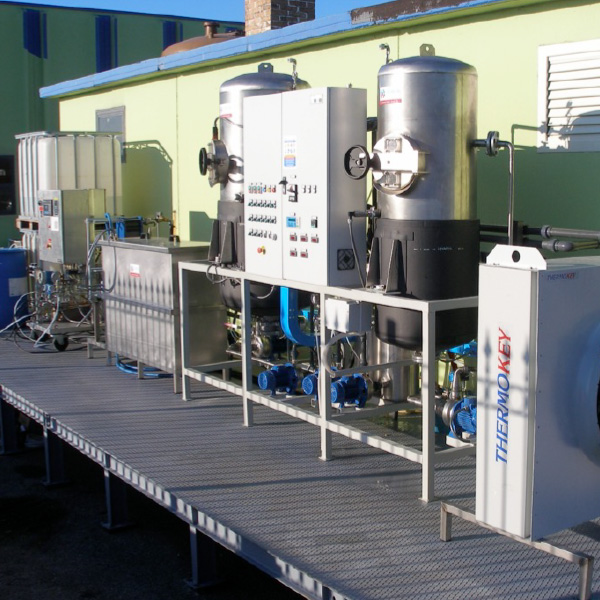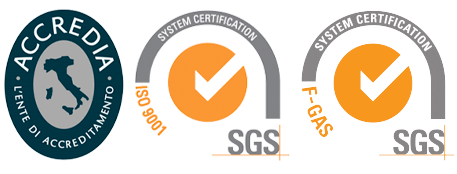Oil Refining
Vegetable oils generally always have an acidity of between 1.5 – 3%. This parameter together with the “rubbers” and the phosphorus present do not make it suitable for use on DIESEL engine generators because they deteriorate the mechanical parts through corrosion. A vegetable oil is suitable for this use when the acidity is lower than 0.5% and the “gums” and phosphorus are absent.
CURRENT OIL REFINING METHODS
Currently, vegetable oils are mainly refined with two techniques: by wet process or by distillation.
WET WAY: consists of a series of steps where the oil is DEGUMMED, ACIDIFIED, NEUTRALIZED, CENTRIFUGATED AND WASHED SEVERAL TIMES TO REMOVE SOAPS, finally STRIPPED VACUUM. So it is ready to use.
As waste, solid pastes are obtained to be disposed of (gums and soaps).
DISTILLATION: consists of two or more steps depending on the acidity of the oil where the latter is first CENTRIFUGATED, VACUUM DISTILLED AT 250°C one or more times until the desired acidity is obtained.
As waste, a recoverable acid oil and “tyre” sludge are obtained.
The system must be ATEX (explosion-proof) because it works at oil ignition temperatures, and an energy source (electricity or steam) at 280°C is required.
The OS300 system uses an innovative method (PATENT PENDING) capable of simplifying the steps, recovering the catalyst mixture obtaining a recoverable acid oil as waste.
The oil undergoes only three steps:
it is NEUTRALIZED, CENTRIFUGATED, VACUUM STRIPPED at 60°C; so it is ready to use. The waste is VACUUM STRIPPED at 60°C obtaining the recovery catalyst mixture and an acid oil which can be reused in various fields.
SO THE ADVANTAGES ARE:
- Simplification of steps
- Continuous treatment of oils with acidity up to 10%
- Recovery of the catalyst mixture
- Use of hot water at 80°C as a heat source (e.g. diesel engine cooling)
- Low operating cost
UNIT DESCRIPTION
The unit in question consists of four devices: a reactor R1, a centrifuge DC1, a continuous cycle vacuum evaporator for stripping the neutralized oil EV1, an evaporator a for the recovery of the used catalyst EV2, a cooling circuit dry cooler.
A control panel equipped with PLC provides for the automatic management of the system.
DATA SHEET
- Treated oil potential * ps 0.892 Ton/d 6.5
- Oil potential produced ** Ton/d 6.2
- Fatty acid oil to be disposed of * kg/d 300
- Thermal power at 85° KWT 35
- Cooling thermal capacity KWT 18
- Installed electric power KWE 15
- Electric power absorbed KWE 10
- Compressed air consumption 6 bar Nm3/h 1
- Specific thermal energy consumption KWT/Ton 45
- Specific electricity consumption KW/Ton 35
- Overall dimensions approx m 12x2x2,5H
- Approx plant weight in operation Ton 2,5
* Data referred to vegetable oil with 3% acidity
** output acidity 0.25-0.4%
VEGETABLE OIL NEUTRALIZATION PLANT MOD. OS300


